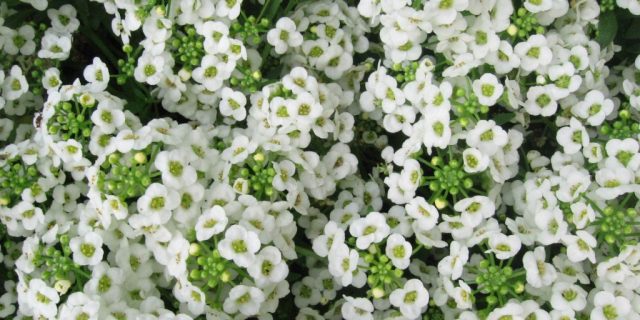03
May
Research Highlights Best Plants to Attract Important Pest Predators

(Beyond Pesticides, May 3, 2023) New research is highlighting the best flowers to plant in order to attract syrphid flies (also known as hover flies, or flower flies), an important pollinator and, in its larval stage, a predator of many common farm and garden pests. With spring in full swing, the results of the study, published in the journal Environmental Entomology by researchers at the University of New Hampshire (UNH), provide a helpful guide for growers wishing to avoid pesticide use and leverage biological pest management techniques.
Study authors indicate that their research is partly a response to growers in the New England region moving away from planting brassicas due to the impact of the cabbage aphid. While there is considerable research on the benefits of syrphid flies for growers in other parts of the country, less is known about the species and flowers that support these insects in the Northeast. “This paper is the first report of the species composition of syrphids living and foraging in our local vegetable systems,” said study coauthor Anna Wallingford, PhD, of UNH. “We knew that syrphids as a group can provide important ecosystem services, and we knew plenty about the foraging behaviors of species in the western U.S. and Europe, but now we know which species are active here in New England.”
A field study was established whereby insectary plants, those attractive to beneficial insects like syrphid flies, were established in 3x6ft plots in the states of Connecticut, New Hampshire, and Massachusetts. Insectary plants included sweet alyssum, ammi (‘white dill’), buckwheat, calendula, cilantro, dill, phacelia, and fennel. These plots were surrounded by various vegetable plantings that changed over the three years of the study. Intercropping included winter rye, cabbage, willow, sweet corn, cucumbers, lettuce, barley, broccoli, sunn hemp, winter rye, bok choy, grape, strawberry, and brussels sprouts.
Syrphid flies were regularly collected (15-16 samples) in the summer and fall months in all plots, and analyzed for their relative abundance on different plants. All insectary plants were compared to sweet alyssum, as the plant has been well established as attractant to hover flies in other studies conducted around the world.
Results show that very few insectary plants are more attractive than sweet alyssum. Ammi, calendula, and phacelia generally hosted fewer flies than sweet alyssum, but cilantro and dill sometimes did reach parity. Buckwheat was a standout, at times attracting over 4 times more hover flies than sweet alyssum.
But while buckwheat is an incredibly effective attractant, its overall impact is reduced by its incredibly short bloom period, averaging just under 30 days. Sweet alyssum, with its average of nearly 90 days of bloom, remain the most effective year-round syrphid fly habitat.
Overall, researchers collected 1,447 syrphid flies representing 21 different species. “Toxomerus marginatus, or the margined calligrapher, is the most abundant syrphid fly found in this study (about 70 percent of the total surveyed syrphids) and is known to be abundant across North America,” said coauthor Alina (Harris) Cypher ’19G. “In addition to eating aphids, their predatory larvae feed on a variety of other soft bodied insects (thrips, caterpillars, mealy bugs), which suggests our insectary plant research has implications of contributing pest management services in range of crops and pest complexes.”
The findings should help inform the annual plantings farmers and gardeners along the US East Coast may want to consider as they work to reduce pest pressure on their plots. “One drawback of using buckwheat, dill and cilantro over alyssum is that they bloom for shorter time periods, and they aren’t as cold hardy in the spring and fall,” said Cypher. “Sweet alyssum was the standout species, due to its season-long continuous bloom period that did not require multiple plantings throughout the year.”
Research consistently finds that adding diversity to a cropping system results in significant ongoing benefits for pest management and yield, while monocultures harm biodiversity and the capacity for biological pest management.
All unattributed positions and opinions in this piece are those of Beyond Pesticides.
Source: UNH Today, Environmental Entomology
Image Source: Wikimedia










